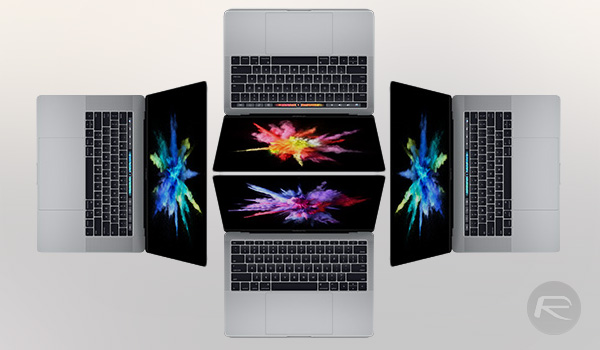
The notch and the areas next to it, which are used for menu items, are basically sitting on top of the regular 16:10 aspect ratio screen and do not block any portion of the panel. The Safari browser is one of these apps, so do not expect smoother scrolling yet. You notice smoother transitions when you navigate the OS, for example, but not all of Apple’s own apps support the higher refresh rate yet.
#Apple new macbook pro 2016 comparison pro#
It looks like Apple’s Pro Motion technology with a dynamic refresh rate of up to 120 Hz helps a bit. They are pretty slow according to our measurements, but you do not really notice ghosting in practice. This constant flickering also makes it extremely hard to determine the response times. The frequency is very high and will not be an issue for most users, but the panel of the new MacBook Pro 16 is not suited for you if you are very sensitive to the flickering. The constant PWM flickering at around 15 kHz is another problem, and we can even detect it at the maximum HDR brightness. As soon as an application with HDR images (preview window in Final Cut, for example) requires more brightness, the panel will provide it.

The Mini-LED panel has an advantage thanks to the superior contrast ratio. However, this does not really help most of the time because most everyday stuff uses SDR contents, where the brightness is once again limited to little more than 500 nits, which is on par with the predecessor. Up to an APL of 50 (average picture level, even distribution of bright and dark contents) we can measure a peak brightness of up to 1620 nits, and still very good 1174 nits at a completely white image (at least a 16:9 video with small black borders), so we can confirm Apple’s claims. Like on the smaller MacBook Pro 14, Apple’s official brightness specs only apply for HDR images. The Touch-ID fingerprint scanner is located inside the power button in the upper right corner and a ring highlights it, but this is just a visual gimmick. Most rivals only offer two or three brightness levels and often without a sensor. Apple is definitely still ahead of the rivals in terms of keyboard illumination, which is automatically activated/deactivated and the intensity is adjusted in very fine steps. The Touch Bar of the old models was also replaced by standard function keys, which, contrary to the current MacBook Air, have the same vertical height than all the other keys. The manufacturer now uses black for the space between the keys, which used to be the chassis color in the previous versions. It is also a matter of taste and you can type very quickly and comfortably, but there are devices with better and more comfortable keyboards in this price segment.

The keyboard, which is also used in other MacBook models, still convinces with a very precise and even feedback, but we would have liked to see more key travel considering the thicker base unit. The key stroke is just slightly more muffled. There are still some issues with external displays and docking stations (transfer rates are limited to USB 3.0 speeds), but this is caused by the new macOS Monterey.Īpple keeps its familiar keyboard with the standard scissor keys and the typing experience of the new keyboard hardly differs from the old MBP 16. SKUs with the M1 Pro can drive up to two external 4K screens at 60 Hz, while SKUs with the M1 Max can drive up to three external 6K screens (60 Hz) and one additional 4K display (60 Hz).Įach of the Thunderbolt 4 ports is attached via 40 GB/s interface and we managed to get transfer rates of more than 2.5 GB/s with an external SSD. The port standards are only up to date in terms of Thunderbolt 4, while HDMI only supports the 2.0 standard, so the external 4K monitors are limited to 60 Hz. A USB-A port would have probably fitted as well, but the lack of it means you will probably require adapters from time to time. There are two more familiar connectors with a comeback: The HDMI output as well as the SDCX card reader. You can also charge the MBP 16 via USB-C, but only with up to 100 Watts. However, one of the TB ports was usually blocked by the power adapter anyway, which is now taken care of by the MagSafe connector, which has returned. On paper, the new MacBook Pro 16 might have lost one of its Thunderbolt ports, because now you “only” get three instead of four USB-C ports (updated to Thunderbolt 4).


 0 kommentar(er)
0 kommentar(er)
